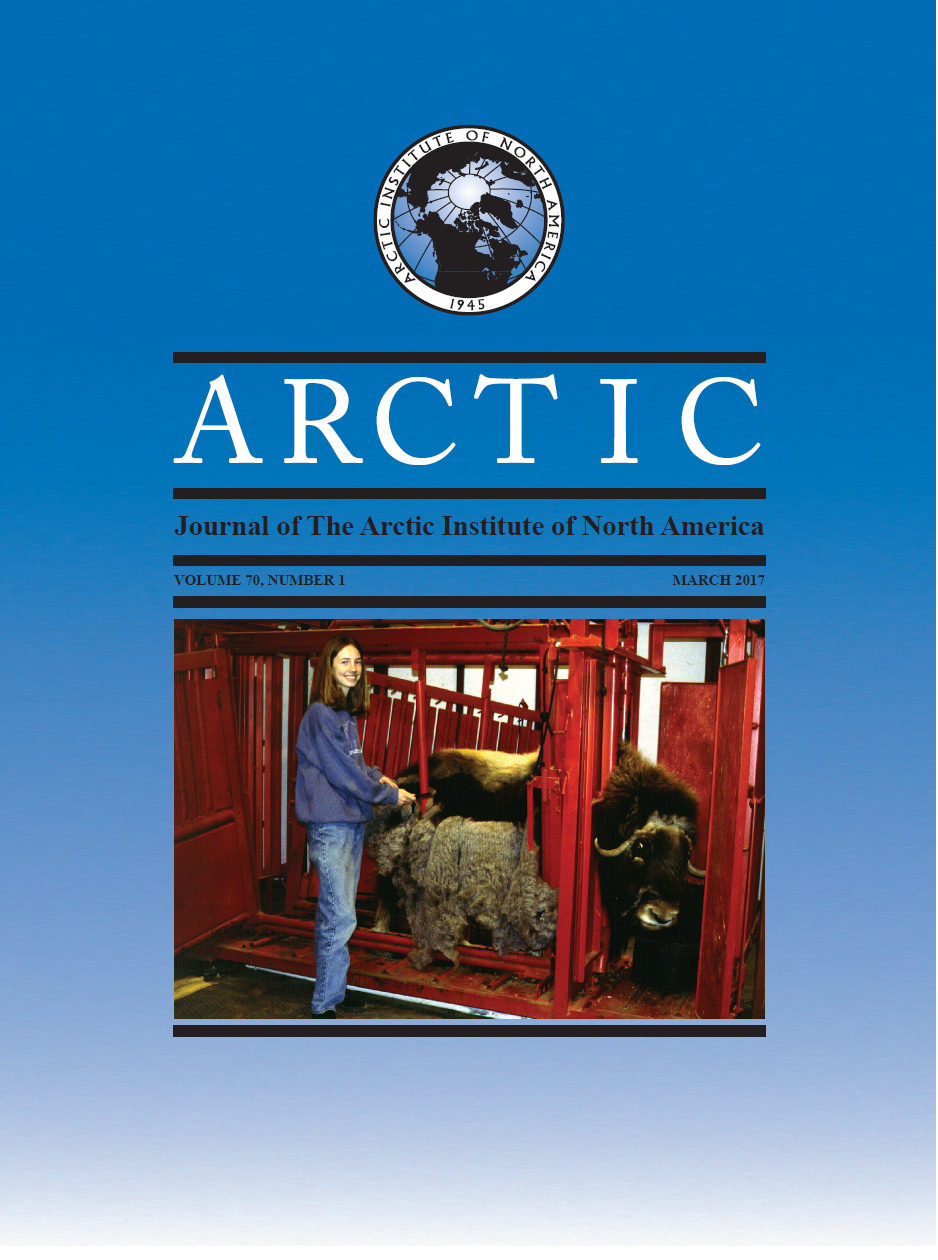Effects of a Hazing-Light System on Migration and Collision Avoidance of Eiders at an Artificial Oil-Production Island, Arctic Alaska
DOI :
https://doi.org/10.14430/arctic4628Mots-clés :
Alaska, comportement, collision, eider, attirance vers la lumière, migration, risque, SomateriaRésumé
En période de migration, l’eider à duvet et l’eider à tête grise (Somateria mollissima et S. spectabilis) survolent la mer de Beaufort et la mer des Tchouktches dans l’Alaska de l’Arctique. Comme ils sont attirés par les lumières, les eiders risquent d’entrer en collision avec des structures, y compris les installations pétrolières au large. De 2001 à 2004, nous avons utilisé un radar ornithologique pour caractériser le comportement des eiders qui migrent au-delà de l’île Northstar, une île de production pétrolière près de Prudhoe Bay, en Alaska, et pour évaluer les effets d’un système d’éclairage de dispersion sur les eiders en migration. Les « eiders » ciblés par le radar présentaient des périodes de mouvement pulsées et irrégulières; les taux de mouvement étaient plus importants en présence de glace marine, en l’absence de précipitation et en présence de vent arrière et de vent latéral, mais n’étaient pas touchés par les lumières. Les vélocités (vitesses au sol) étaient plus élevées en présence de glace et de forts vents arrière. Elles étaient plus basses la nuit lorsque les lumières étaient allumées, mais plus élevées le jour lorsque les lumières étaient allumées. Nous avons observé peu de variation quant au comportement de vol des cibles atteintes par le radar pendant qu’elles survolaient l’île; la proportion de comportements de vol non directionnels était plus importante en présence de glace, de vent arrière, de vent faible et lorsque la pleine lune n’était pas visible. Les lumières n’ont pas eu d’impact sur le comportement de vol. Lorsque les lumières étaient allumées, les oiseaux avaient tendance à changer de direction plus souvent durant leur vol à l’approche de l’île et à effectuer de plus grandes variations angulaires lorsqu’ils changeaient de direction, puis présentaient une nette augmentation de la distance de passage à la suite de ces changements de direction. Toutefois, aucune de ces différences n’était statistiquement importante. En général, les lumières de dispersion de l’île Northstar n’ont pas nui aux mouvements migratoires des oiseaux, mais ces derniers ont davantage évité de voler près de l’île.


